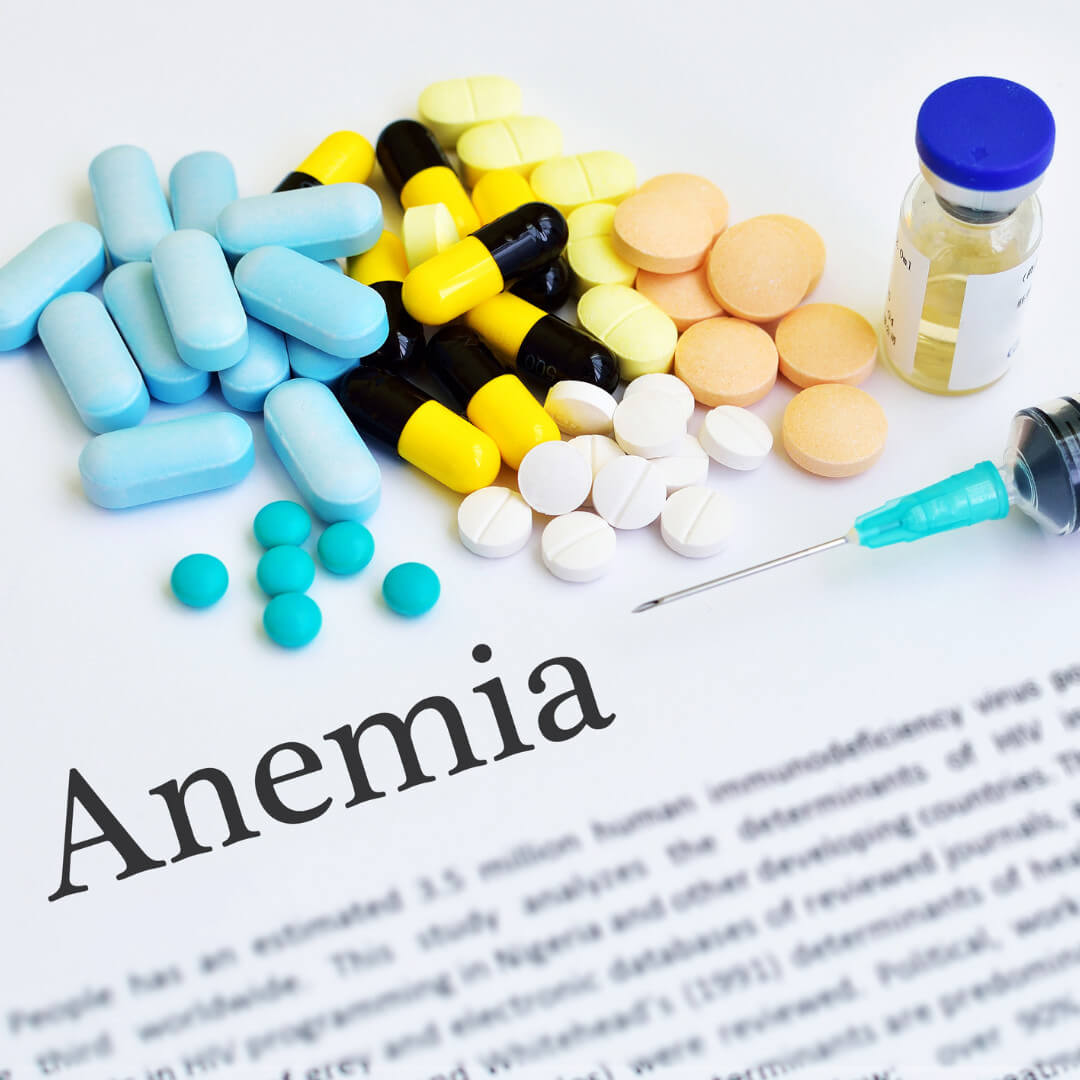KBW | Are you Anemic?

Anemia is the #1 hematologic disorder in the US, and it influences both morbidity and mortality, making this an important topic. In fact, 5.6% of the US population suffers from anemia and 2 billion people worldwide are affected, with the highest risk category being women of childbearing age (Raymond & Morrow, 2020).

There are various types of anemia:
-
Macrocytic - this can be either megaloblastic or non megaloblastic and is caused by B12 deficiencies, folate deficiencies, or DNA synthesis disorders. It can also be drug-induced, such as with chemo, birth control, and seizure medications.
-
Hypochromic Microcytic - this is caused by iron deficiency, disorders of globin synthesis, disorders of porphyrin and heme synthesis, or copper imbalances.
-
Normochromic normocytic - this may be caused by recent blood loss, overexpansion of plasma volume, hemolytic diseases, hypoplastic bone marrow, endocrine abnormality, chronic disease, renal disease, or liver disease.
How to Test for Anemia
You have several options when it comes to testing. One is to see your primary care physician and request the list of tests. They will need this so they can properly code the tests for insurance. Most people asking to test for anemia feel fatigued as their chief complaint. Make sure you request a copy of your labs so you can evaluate them for yourself! Far too many people bring me their labs only to be shocked that numbers are completely out of range and even flagged by the lab, yet their doctor told them it was completely normal.
Another option is to order the labs yourself. These will not go through insurance (as there will be no one to diagnose you with fatigue to send the code to insurance), but it will save you a trip to the doctor's office, a copay, and other potential expenses depending on your insurance. If you want to test for anemia this way, you can go to → this website

The Labs:
-
Order a CBC and look closely at the following markers in the CBC: MCV, MCHC, RDW
-
Order: Ferritin, TBIC, Transferrin saturation, total iron
Note: do NOT order iron alone! You need ALL of these to make sure you have IDA (iron deficiency anemia) and not ACD (anemia of chronic disease). Treating one when you have the other is incredibly dangerous.
Even if these are only slightly out of range, you may be in the beginning stages of anemia. Ex: in stage 1 iron insufficiency plasma ferritin will be less than 25 (ideal is 60-100), but most labs don’t flag it until it is below 20.
It’s much easier to rebound from anemia when it’s caught early - don’t wait until it’s too late!

Anemia Treatment Options
Treatment depends on the type of anemia, the stage, and the root cause. Make sure you find the root cause, or you’ll be “treating” it forever! This is something I always make sure to impress upon the clients I work with. If you only address the symptoms you will be stuck there, treating the symptoms forever and ever. But if you address the CAUSE of the symptoms, you won’t need to deal with the symptoms at all anymore!
For example, if your doctor finds that you have iron deficiency anemia, you’ll want to find out if it’s from intestinal bleeding (such as with ulcerative colitis or ulcers) or if it’s due to heavy menstrual cycles. In the case of heavy menstrual cycles, regulating hormones to regulate cycles should be part of the treatment in addition to increasing iron intake and absorption from foods.
There are many natural ways to increase iron absorption from foods. To learn more on how to do this, head over to my YouTube channel for my video on How to Naturally Increase Your Iron Stores →
Are you ready to start feeling better?
My team and I are here to partner with you on your health goals.
Find out more about working with us here ↓

